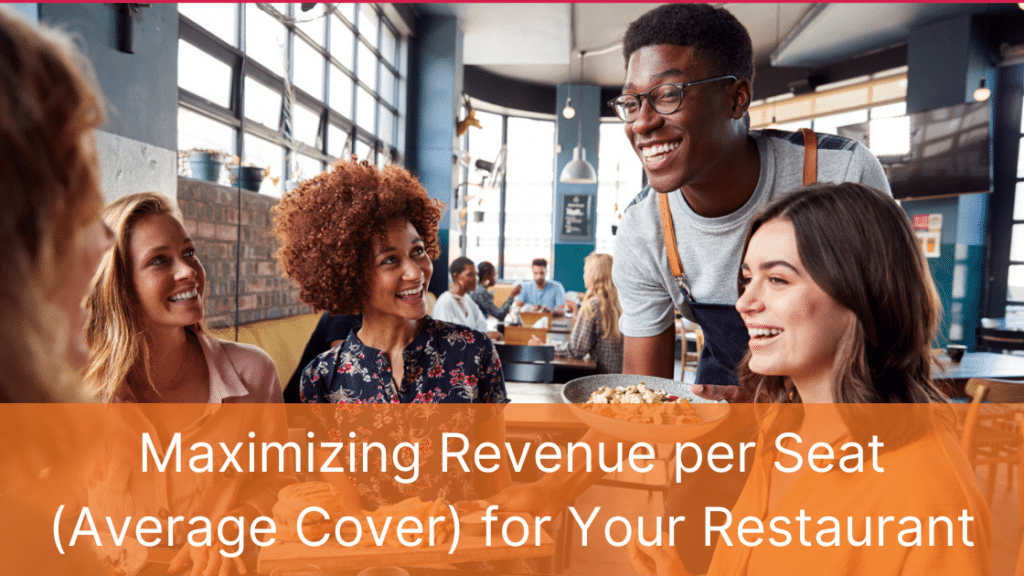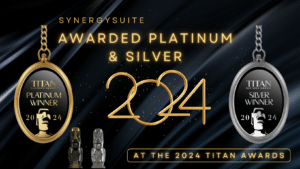In the competitive restaurant industry, the bottom line often determines a restaurant’s success or failure. One of the key metrics that restaurateurs must pay close attention to is revenue per seat, also known as average cover. This metric measures the average amount of money a restaurant earns from each seated guest. It is a critical indicator of a restaurant’s financial health and its ability to generate profit.
Here we will delve deep into the concept of revenue per seat, exploring what it is, why it’s important, and how you can strategically increase it to drive higher profits for your restaurant.
Understanding Revenue per Seat or Average Cover
Understanding revenue per seat, or average cover, is a fundamental aspect of financial management and strategic planning for restaurants. This key metric provides valuable insights into the financial health and operational efficiency of a dining establishment.
Revenue per seat represents the average income generated for each occupied seat within a specified timeframe, offering a nuanced perspective on customer spending patterns and the effectiveness of pricing strategies.
As an essential component of performance metrics in the hospitality industry, revenue per seat goes beyond mere sales figures, shedding light on the quality of the dining experience, pricing competitiveness, and overall operational effectiveness.
Definition of Revenue per Seat or Average Cover
Revenue per seat or average cover is a financial metric that quantifies the average revenue generated from each guest seated at your restaurant. It is calculated by dividing the total revenue earned in a given period (usually a day, week, or month) by the total number of guests served during that same period.
Formula for Revenue per Seat (Average Cover):
Revenue per Seat = Total Revenue / Total Number of Guests
For example, if your restaurant earned $5,000 in revenue and served 200 guests in a day, your Average Cover would be:
Average Cover = 200 / $5,000 = $25 per seat
This means that, on average, each guest spent $25 during their visit to your restaurant.
Importance of Tracking Average Cover
Effective management of revenue per seat is vital for several reasons:
Profit Maximization
Increasing your average cover directly contributes to higher profits. By strategically encouraging customers to spend more, you can boost your revenue without significantly increasing your expenses.
Resource Allocation
Knowing your average cover allows you to allocate resources more efficiently. For instance, you can schedule the right number of staff and order the appropriate amount of ingredients to match the expected revenue.
Competitive Advantage
In a competitive market, a higher revenue per seat can set your restaurant apart. It allows you to invest in quality ingredients, exceptional service, and an overall better dining experience.
Data-Driven Decisions
Tracking average cover provides you with valuable data to make informed decisions. It helps you identify trends, measure the impact of pricing changes, and assess the success of marketing initiatives.
Why Revenue per Seat Matters
Why does revenue per seat matter so much? Understanding and monitoring average cover is essential for several reasons. Firstly, it provides insights into customer spending habits and the overall pricing strategy of the establishment. A higher average cover indicates that customers are spending more per visit, reflecting positively on the menu pricing and potentially leading to increased profitability.
Secondly, tracking average cover helps in optimizing seating arrangements and overall capacity utilization. Efficient use of seating space ensures that the restaurant is maximizing revenue potential during peak hours. Here are a few other reasons:
Profitability
A higher revenue per seat directly correlates with increased profitability. It means that your restaurant is making more money from each customer, which can contribute significantly to your overall revenue.
Operational Efficiency
A restaurant that can maximize revenue per seat is likely to be operating efficiently. It can indicate that you are optimizing your resources, from staff to ingredients, to generate more revenue without sacrificing quality.
Sustainability
In the long run, a high average cover can make your restaurant more sustainable. It provides a buffer against rising costs and economic fluctuations, allowing you to weather challenges and thrive.
A focus on improving average cover encourages restaurants to enhance the overall dining experience, potentially leading to increased customer satisfaction and repeat business. Ultimately, monitoring and managing revenue per seat is integral to making informed business decisions, refining operational strategies, and sustaining financial success in the competitive restaurant industry.
Strategies to Increase Revenue per Seat
Increasing your revenue per seat requires a thoughtful approach and strategic implementation. Here are several strategies and techniques that you can employ to encourage your customers to spend more during their dining experience:
Menu Engineering
Menu engineering is the art and science of designing your menu to maximize profitability. This strategy involves arranging menu items strategically, emphasizing high-margin dishes, and using pricing psychology to guide customers towards more profitable choices.
Key Menu Engineering Techniques
- Highlight High-Profit Items: Place your most profitable dishes in prominent positions on the menu, like the top right corner or in a dedicated section.
- Use Descriptive Language: Craft compelling descriptions for menu items to make them sound irresistible. Highlight unique ingredients, preparation methods, and flavors.
- Anchor Pricing: Use high-priced items strategically to make other dishes seem like better value propositions.
- Bundle Complementary Items: Create meal bundles that include a main course, side dish, and beverage for a fixed price. This encourages customers to order more.
Pricing Strategies
Your pricing strategy plays a pivotal role in influencing average cover. While you want to maximize revenue, you must also ensure that your pricing is fair and aligns with customer expectations.
Effective Pricing Strategies
- Psychological Pricing: Use pricing techniques like $9.99 instead of $10.00 to make items appear cheaper.
- Dynamic Pricing: Consider implementing dynamic pricing, where menu prices change based on demand or time of day.
- Tiered Pricing: Offer different pricing tiers for items. For example, a basic, premium, and deluxe version of a dish.
- Value-Added Pricing: Offer add-ons or upgrades for an additional fee, such as extra toppings, larger portions, or premium ingredients.
Upselling Techniques
Training your staff to upsell effectively can have a significant impact on your average cover. However, it’s essential to do this in a way that enhances the customer experience rather than feeling pushy.
Upselling Tips
- Recommend Complementary Items: Train your servers to suggest side dishes, appetizers, or beverages that pair well with the customer’s order.
- Highlight Specials: Encourage staff to promote daily specials or chef’s recommendations.
- Offer Upsize Options: Ask if customers would like to upgrade their meal, e.g., from a regular to a large portion, for a small additional charge.
- Leverage Add-Ons: Suggest add-ons like dessert, coffee, or cocktails at the end of the meal.
Bundle Deals and Specials
Creating bundle deals and special promotions can entice customers to spend more during their visit. These promotions can be tailored to specific days of the week or events.
Effective Promotions and Specials
- Happy Hour: Offer discounted drinks or appetizers during off-peak hours to attract more customers.
- Combo Meals: Create combo meals that include an appetizer, main course, and dessert for a fixed price.
- Loyalty Programs: Implement loyalty programs that reward repeat customers with discounts or free items after a certain number of visits.
- Seasonal Promotions: Introduce seasonal specials to keep your menu fresh and encourage repeat visits.
Enhancing the Dining Experience
Improving the overall dining experience can lead to increased customer satisfaction and higher spending. A memorable experience encourages guests to return and spend more on subsequent visits.
Enhancement Strategies
Outstanding Service: Train your staff to provide exceptional service, including attentive waitstaff, prompt service, and a welcoming atmosphere.
- Ambiance: Invest in the ambiance of your restaurant, including decor, lighting, and music, to create a comfortable and enjoyable environment.
- Special Occasion Packages: Offer special packages for celebrations like birthdays, anniversaries, or corporate events.
- Personalization: Get to know your regular customers and personalize their experience by remembering their preferences and offering tailored recommendations.
By implementing these strategies, you can gradually increase your restaurant’s revenue per seat while simultaneously improving the overall customer experience, which can lead to customer loyalty and sustained growth.
Measuring and Analyzing Average Cover
To effectively optimize your restaurant’s revenue per seat, it’s crucial to measure, analyze, and make data-driven decisions. Let’s explore the steps involved in measuring and analyzing your average cover to ensure continuous improvement.
Data Collection
Accurate data collection is the foundation for understanding your restaurant’s average cover. Here’s how to collect the necessary data:
- POS Systems: Utilize modern Point of Sale (POS) systems to automatically record sales data, including the total revenue and the number of guests served.
- Customer Feedback: Encourage customers to provide feedback on their dining experience. Include questions about their spending habits, such as whether they ordered additional items or took advantage of promotions.
- Reservation Systems: If your restaurant accepts reservations, integrate reservation data into your analysis. This can help you track average cover for different booking types.
- Manual Recording: In cases where you don’t have access to advanced POS systems, train your staff to record sales data accurately.
Analyzing Trends
Analyzing trends in your average cover data can provide valuable insights into customer behavior and the effectiveness of your strategies. Here’s how to go about it:
- Time Period Analysis: Compare average cover data across different time periods (e.g., weekdays vs. weekends, lunch vs. dinner) to identify patterns and trends.
- Menu Item Analysis: Evaluate the performance of specific menu items. Are there dishes that consistently contribute to higher average cover? Are there underperforming items that could be improved or removed?
- Seasonal Variations: Consider how average cover fluctuates with the seasons, holidays, or special events. Adjust your strategies accordingly to capitalize on high-demand periods.
- Customer Segmentation: Segment your customer data to understand the spending habits of different customer groups. This can help tailor your offerings and promotions.
Setting Goals and Benchmarks
To improve your restaurant’s average cover, it’s essential to set realistic goals and benchmarks. This step allows you to track progress and measure the effectiveness of your strategies:
- Establish Clear Goals: Determine what you want to achieve with your average cover. For example, you might set a goal to increase it by a certain percentage over the next quarter.
- Benchmark Against Industry Standards: Research industry benchmarks to understand where your restaurant stands compared to competitors. This can help you identify areas for improvement.
- Track and Adjust: Regularly track your average cover and compare it against your goals and benchmarks. If you’re falling short, consider adjusting your strategies or experimenting with new approaches.
- Feedback Loop: Continuously gather feedback from customers and staff to understand what is working and what needs improvement. Use this feedback to refine your strategies.
By following these steps, you can develop a data-driven approach to improving your restaurant’s revenue per seat. Over time, you’ll gain insights into customer behavior and preferences, allowing you to make informed decisions to enhance profitability while providing an exceptional dining experience.
The Future of Your Restaurant
Optimizing revenue per seat is not just a short-term goal; it’s a long-term strategy that can transform the future of your restaurant. Here’s what you can look forward to:
Sustainability
Higher average cover provides financial stability, allowing your restaurant to weather economic fluctuations and unforeseen challenges.
Enhanced Reputation
Consistently delivering a great dining experience and increasing average cover can lead to positive word-of-mouth, online reviews, and a strong reputation in the industry.
Loyal Customer Base
As customers experience exceptional dining and value for their money, they are more likely to become loyal patrons who return frequently and refer others.
Room for Innovation
Financial stability opens doors for innovation, enabling you to explore new menu items, expand your offerings, and invest in improvements that keep your restaurant fresh and appealing.
The journey to maximizing revenue per seat is an ongoing process that requires dedication, creativity, and a data-driven mindset. By continually striving to improve this essential metric, you can pave the way for a thriving and prosperous future for your restaurant. Remember that each guest represents an opportunity to not only increase your average cover but also create lasting memories and build a loyal customer base that sustains your success over time.
Stay on Top of Your Restaurant Analytics with SynergySuite
Being able to readily stay on top of your data, and make informed decisions based on that data, it’s absolutely critical to have implemented a quality restaurant reporting and analytics platform like SynergySuite.
Many of the problems and challenges of running a restaurant can be solved or avoided with the right restaurant reporting tools. We offer restaurant analytics software that captures and presents your data in an easy-to-understand dashboard. We make it simple to use your valuable data to save time, improve profitability, and ensure compliance with regulations.
Schedule a demo today to see how SynergySuite can help you take your restaurant business to the next level.





